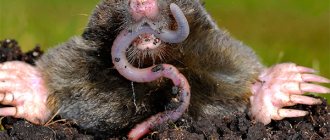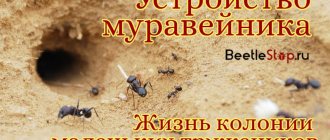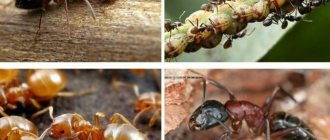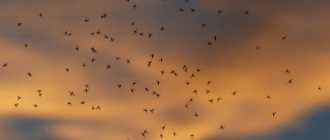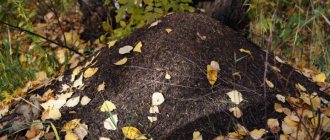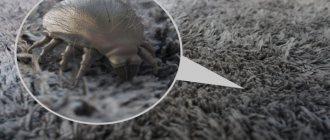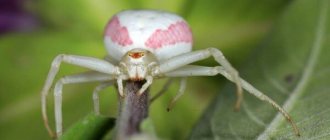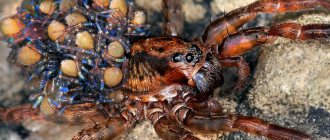Few people have thought that insects, which are present in the summer almost throughout Russia, build original nests, sting painfully, and are unique in nature. Even fewer people know what wasps eat, so let's try to answer this question.
At different stages of development, the wasp feeds differently. This method of feeding is designed by nature so that they do not have to fight with each other for food, the young are well-fed, despite the fact that adults practically eat everything.
Feeding features of the house wasp
Wasps can be described as almost omnivorous creatures, and this is the main difference between them and bees. However, there are many nuances in their way of eating and diet. The larvae can feed exclusively on animal food - other insects. It follows that the younger generation can be of great benefit to gardeners by helping to destroy crop pests. The diet of wasps includes:
- Insects and their larvae;
- Meat;
- Fish;
- Fruits;
- Nectar of flowers;
- Syrup.
The food preferences of wasps vary greatly depending on their stage of development. The scientific explanation for this fact is to exclude competition for a food source between individuals of the same species at different life stages.
Where do they winter?
The most common version is that after the wasps leave the nest with the onset of cold weather, they look for a place where they can overwinter. But there is another one - insects are looking for a place to winter not in the fall, but starting from the end of summer. In any case, the shelter in which the wasp will spend the winter must maintain a constant temperature and be as closed as possible from wind and frost. That is why in the fall, wasps sometimes actively climb into a house, barn, or bathhouse, hiding in cracks and crevices.
Most often in nature, wasps spend the winter in places such as:
- tree bark (insects gnaw holes in it or get into existing cracks);
- in old rotten stumps;
- in rotten fallen trees;
- in a heap of fallen leaves.
Wasps moisten the walls of their winter shelter with saliva. Thanks to the enzymes it contains, the wood becomes denser and better protects the female until the weather warms up and she can fly again.
What do adults eat?
The diet of wasps is quite varied. Insects prefer fruit and berry juices and fruit pulp. Among their favorite fruits are raspberries, plums, apricots, strawberries, and grapes. Wasps try to avoid harder fruits whenever possible. Adults are very attracted to overripe fruits that have begun to ferment. Syrup, honey, jam and sugar are among the favorite products of winged sweet tooths. Wet sugar or fresh jam will inevitably attract many wasps into your apartment.
Some representatives of aspens at certain stages of their life cycle give preference to the young of various beetles, as well as some species of wasps. These predators are capable of exterminating even larger insects and can successfully hunt spiders of impressive size.
While feeding their larvae, adults hunt other insects and feed them chewed to their offspring. In the process of chewing the prey, the predator also consumes some of its hemolymph. Hemolymph is rich in protein and replenishes the energy reserves of the imago. Directly in the process of feeding and transferring food to the larva, the adult insect receives some of the saliva of the offspring, from where it takes the necessary substances for normal life. However, despite this, plant foods and sweets are preferable for imagoes. A danger to people is represented by wasps that appear out of nowhere in the apartment, flying to the aroma of food.
What do they eat
What wasps eat depends on their habitat. And also on age. Larvae have their own diet, and adult wasps have their own. Their oral apparatus is equipped with powerful jaws capable of chewing through fairly hard food.
But since this is associated with high energy costs and effort, these Hymenoptera prefer soft or liquid food.
In nature
What a wasp eats in nature depends on its species:
- The philanthus (bee wolf) eats honey, and feeds the younger generation with killed bees. Having caught its relative, the philanthus squeezes out and eats the honey, and the offspring feeds on the bee body.
- Scolia (large earthen one) hunts the offspring of the rhinoceros beetle, the beetle. She burrows into the ground, finds the victim, paralyzes it with poison, and then drags it into a prepared hole. Lays eggs on top of the carcass. Creates a new hole for the next larva.
- Pompilides (road). Their larvae prefer to feed on spiders. Some pompylids prey on poisonous tarantulas. Nests are built in the soil or inside branches, young shoots or old cavities of tree trunks. One spider body is enough to feed one larva.
Vegetarian wasps prefer to eat flower nectar and fruit juice.
At home
In search of food, these hymenopteran insects often fly closer to people. Even people without zoological education know what wasps eat at home, since they have seen it with their own eyes more than once.
First of all, they are attracted to something sugary and sweet: carbonated drinks, chocolate, ice cream, wine. They prefer to eat syrups. In the summer, it is better not to keep wet sugar in the open.
Hymenoptera are partial to fermented berries and fruits. They deliberately leave a hole in the skin of the grapes so that after a couple of days they can return and drink the fermented juice. In addition to grapes, they love raspberries, strawberries, and plums. As other fruits (pears, apples) ripen, they switch to them. However, such fruits are less preferable because they are harder.
Nutrition of larvae
Wasps in the larval stage are insectivorous. According to the type of feeding, the larvae are divided into 2 groups: those that parasitize the eggs and larvae of beetles, and those that eat chewed insects of various types. The well-known paper wasps and hornets feed their offspring, which are not able to feed on their own. The larvae are unable to move, they only move their heads. The main food of young animals consists of the following insects:
- Butterflies;
- Bedbugs;
- Caterpillars;
- Slugs;
- Spiders;
- Cockroaches.
When living in close proximity to an apiary, the striped pest will hunt bees in order to feed them to the young. Such large representatives of wasps as hornets are distinguished by their ability to successfully hunt even lizards and mice. Single species of wasps have a less varied diet. Some of them feed exclusively on bedbugs, others on the larvae of certain beetles.
Some species of wasps are characterized by pronounced parasitism. Females climb into the home of other wasps and lay eggs directly on the larvae. It is worth paying special attention to some surprising eating habits of scoliic wasps. Insects do not build nests to raise their young. They lay eggs on prey that has been previously immobilized by poison. Eggs develop on this insect, and when they emerge, the larvae feed on the victim.
Meat and fish are of great interest to wasps, but only as food for the larvae. Adults carry small bitten pieces into the nest and feed them to the offspring, after chewing them first. Both carrion in the forest and fresh meat products at the market are suitable for them. Wasps can appear in the house as soon as they smell the meat smell.
Do wasps eat fish or meat?
Anyone who has ever had the opportunity to cut up meat on the bank of a river in the forest could not help but notice how quickly wasps flock to fresh meat, as a result of which it becomes literally covered with striped buzzing creatures. The same picture can often be observed in butcher shops and spontaneous markets. A reasonable question arises whether wasps eat meat or whether they occupy it in anticipation of other victims - flies. In fact, everything is banally simple. The wasps actually bite off miniature pieces, chew them, and then take them to their nests to feed the larvae.
Fish and natural carrion are of no less interest to wasps. In this case, the insect does not need to hunt, waste poison and, to some extent, risk its life.
Vegetarian wasps
Some species of wasps do not show the slightest interest in meat and fish, as well as in insects as a source of food for themselves or their young. A striking example is the flower wasp, whose diet consists exclusively of flower nectar, regardless of the stage of development. Adults collect nectar from flowers and also store it in their home for their offspring. Other species are very similar to bees in their lifestyle and feeding method - they create reserves of honey.
There are also special types of wasps belonging to the intermediate type. They are in the middle between insects that eat other insects, and radically different from them - they collect and store honey. It is difficult to determine by external signs which representative of the wasp tribe is a vegetarian and which is an omnivore or a parasite. Outwardly, they are very similar, and for the most part have a classic black and yellow color.
What do they eat in summer
In summer, hymenoptera feed on flower nectar, honey from bees, juices of fruits, vegetables, and berries. They love sweets, as well as rotten foods. They are found in vineyards, raspberry fields and fruit and berry gardens.
Insects are attracted to kvass, lemonade, fruit and vegetable juice, jam, and syrup. They often attack bee colonies. They destroy the hive in 2 hours. They eat the honey themselves, and take the bees to feed the younger generation.
Fighting wasps on the site
Before fighting striped predators, you need to find out - is this really necessary? The benefits of them in the form of pest control are obvious. However, if you find a wasp nest in your home, you need to think about a way to eliminate the potential danger.
Wasp traps containing bait are very effective. Considering the food preferences of these insects, it is advisable to use beer, kvass, and fermented fruits. Many gardeners and farmers prefer not to destroy wasps, but use products to protect ripening fruits from pests, in the form of net covers.
Wasps are frequent guests in a private home. They live in close proximity to homes, hunting other insects in gardens or vegetable gardens, and may well fly into a house at the smell of food. If war is declared on these pests, you must take every precaution to avoid exposing yourself, your family, and your pets to them.
What wasps don't like
Insects are sensitive to various pungent odors, so if you want to get rid of them, you can advise planting lemon balm and mint on the territory of your summer cottage, which can repel pests. The wasp definitely does not feed on such plants; moreover, it really does not like their smell.
Such fragrant plants include wormwood, basil, and geranium. Laundry or tar soap, which can be hung near the nest, repels pests. As surprising as this may sound, the smell of pine or pine smoke is also very unpleasant for insects; if it is detected, they may even leave their nest.
One of the least favorite foods for wasps is ordinary table vinegar and ammonia; insects cannot tolerate their aromas.
Wintering process and diet
If anyone is interested in what wasps eat in winter, then essentially nothing. Since they fall into suspended animation, all processes in the body, including metabolic processes, slow down significantly. The wasp not only doesn’t eat, it doesn’t even move and practically doesn’t breathe. However, nature has arranged it so that even in hibernation, the insect’s body receives nutrients. The female has been accumulating them since the end of summer, when she begins to actively eat, absorbing more food than usual. So, when flying away in search of winter shelter, the wasp already has a decent supply of nutrients, which helps her survive the cold winter.
Scolia
These are the largest representatives of their species. Most of these wasps live in tropical and subtropical regions, but some move further north. The maximum concentration of insects was observed in Southeast Asia.
Large Scolia females reach sizes of up to 5 cm, with a wingspan of 10 cm. In a good half of the cases, the wasps are black in color with barely noticeable yellow or white spots. Adults act as pollinators.
The wasps themselves prefer nectar, and lay their offspring in the beetle colony. The victims are then paralyzed. Scolia larvae feed by eating both young and immobilized insects. Untouched foraging beetles, without realizing it, bring new food to the parasitic larvae.
Social structure and reproduction
Photo: Insect wasp
In winter, adults are constantly in shelter. To do this, they find a secluded place for themselves in advance. With the onset of spring, with the first warmth, the queen flies out in search of a suitable place to build a nest. The nest is necessary so that the female can lay eggs there and raise her offspring. Tree bark, clay, stones and other natural materials are used for construction.
The first eggs hatch into sterile individuals. They will continue to build a home and bring food for the queen's future offspring. Only at the end of summer do offspring appear that are capable of reproducing their own kind. It is this that will mate in the future. After fertilization, the females will look for a place for a warm winter, and the males will soon die a natural death.
One female wasp can reproduce about two thousand individuals. Most of them will be infertile. The uterus seals the laid eggs in a special chamber. She also places small insects there. The larvae will feed on these insects in the future and soon turn into adults. The larvae, which will be able to reproduce in the future, have a completely different diet. They are fed food that promotes the development of sexual organs. The queen lives for about ten months, while sterile wasps only live for four weeks.
Origin of the species and description
Photo: Osa
Wasps do not have a clear scientific definition. This is the customary name for all stinging stalked-bellied insects from the order Hymenoptera, which do not belong to bees or ants. Today there is a huge variety of different wasps. Insects of this type include the following wasps: road wasps, glitter wasps, sand wasps, skolia wasps, paper wasps, flower wasps, hornets, burrowing wasps, and many others.
All of them are conventionally divided into two categories:
- Singles;
- Public.
Interesting fact: Unlike bees, wasps can defend themselves not only with the help of a sting. If their existence is threatened, insects can use the jaw apparatus. Their bite is quite sensitive.
The solitary wasp leads a solitary life and builds an unusual nest. All adults are capable of reproduction. If nests are built, then in very secluded corners: on walls, on a tree, in the soil. And only a small number of species prefer to live without nests. They rest in natural holes in the wood.
Social wasps prefer to live in families. Their nests are built by the queen. Not all adults are capable of reproduction. Sometimes a colony can number several thousand wasps, but only one of them can reproduce. Infertile wasps are called workers, fertile ones are called queens.
Interesting fact: Most Hymenoptera can transition from a solitary to a social lifestyle. This transition takes place in several stages.
Features of character and lifestyle
Photo: Bumblebee Wasp
The lifestyle of this animal depends on the species. The life of solitary wasps can be called monotonous. They are actively engaged in preparing reserves for offspring. To do this, they place the paralyzed prey in the nest so that the larvae can feed on it. Further, the offspring will develop independently, without the help of their parents.
Social wasps live more interesting lives. In the spring, the queen looks for a place to create a “house”. There she lays eggs. When the larvae appear, the queen takes care of them. The first brood grows up over time and relieves its parent of worries. They take on all the responsibilities for obtaining food and building a house. The queen continues to increase the number of colonies.
There is an opinion that stinging insects spend the night sleeping. But that's not true! These animals never sleep. With the onset of darkness, their natural activity simply decreases. Wasps prefer to spend their nights in their nests, chewing bark. When morning comes, the adults begin building new honeycombs.
Interesting fact: The lifespan of males usually does not exceed two weeks. Male wasps die soon after mating.
The character of most representatives of this species is very bad. Wasps are not the first to attack without doing anything, but they will definitely sting if you disturb them even a little. In this case, the smell of the secreted poison can be smelled by relatives of the insect. Then the person or animal who disturbed the wasp will be in big trouble. Wasps can band together and face danger together.
